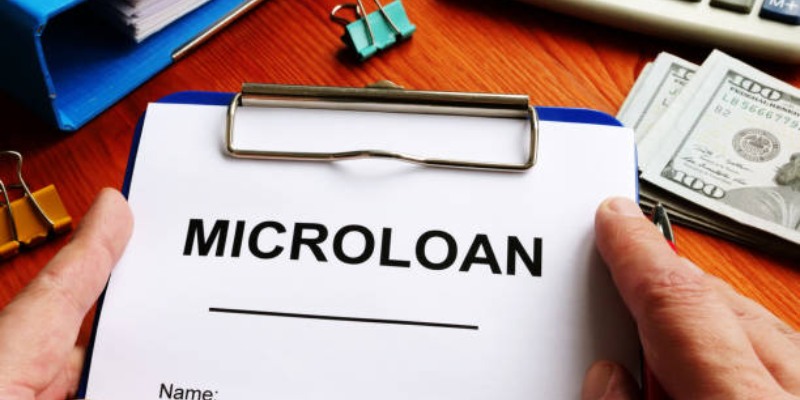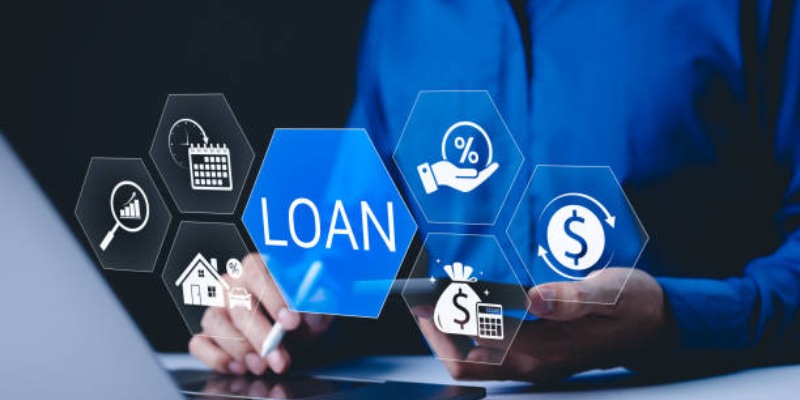General Finance
Best High-Yield Savings Accounts to Grow Your Money
1757645995000
Some people hear the word "microloan" and think it's only for impoverished farmers in remote villages. But that's not true. A microloan is for anyone who wants to grow a small business, cover an urgent need, or take a bold step toward independence but lacks significant support. It is a small loan given to individuals or small groups who may not qualify for traditional bank loans.
Some people hear the word "microloan" and think it's only for impoverished farmers in remote villages. But that's not true. A microloan is for anyone who wants to grow a small business, cover an urgent need, or take a bold step toward independence but lacks significant support. It is a small loan given to individuals or small groups who may not qualify for traditional bank loans.
A microloan is a small amount of money loaned out, typically ranging from $100 to $50,000. It may seem minor to some people, but to the right person, it can change everything. It can help buy sewing machines, stock up a small shop, or even build an online store.

These loans are primarily used by small business owners, freelancers, or individuals with side hustles. Sometimes, it's not that the idea is bad. It's that the owner needs a little push. That's where microloans come in.
Unlike regular bank loans, microloans do not need huge paperwork or perfect credit scores. Many microloan lenders understand that people make mistakes. They are more interested in helping you rise, not punishing you for falling.
Not every bank offers microloans, and that's perfectly fine. Microloans are typically provided by non-profit organisations, online lenders, credit unions, or community development groups. Some even come from government programs made to help small businesses grow.
There are also peer-to-peer lending platforms where individuals borrow directly from one another. The good ones don't only give money. They provide mentorship, tools, and time.
Because the goal is not just to give money but to ensure it is used effectively, some lenders offer business training or request a plan outlining how the loan will be utilised.
Let this be clear. A microloan is still a loan. It must be paid back.
This needs to be said because some people collect loans like gifts. They waste it on things that don't bring a profit or help achieve their goal. Then, they disappear or start blaming the economy. That's not wise.
Loan money should be invested in something productive. Something that grows. Something that brings back returns. If used wisely, the same loan that initially appears small can open big doors later. But if used foolishly, it becomes just another reason to stay broke.
The woman who sells food and wants to buy a bigger stove. The barber needs one more clipper. The student who makes shoes but needs money to purchase materials. The man who started a delivery service needs to fix his bike—the single mom who bakes but can't afford an oven.
These are the real faces of microloans. It's not about having nothing. It's about having something that needs a little help.
Yet, some people are too proud to ask. They wait for millions instead of starting with hundreds of thousands. They mock small money, not knowing big money respects small steps.

Before asking for any loan, ask yourself: What do I need it for, and how will I repay it?
Here’s how to prepare:
Don't just say, "I need money." Say what the money is for. Whether it's for stock, tools, rent, or business expansion, be clear about your needs. Most lenders won't give money if you sound confused or unsure.
It doesn’t have to be a 30-page business plan. Just write down your goal, how much you need, what you’ll use it for, and how long you need to repay it.
If the plan is to sell ice cream, then specify the cost of ingredients, packaging, and the method of sale. Lenders want to see that you've given it careful consideration.
Some lenders may check your credit score. Others won't. But it's good to know your credit health. Even if you have bad credit, don't lie about it. Some lenders work with individuals who have poor credit but demonstrate a genuine commitment to improving their financial situation.
Avoid shady lenders who promise loans with no checks or questions. These often lead to high interest and trouble.
Apply through trusted lenders, government-backed programs, or known microloan platforms. Some places even let you apply online.
If you don’t have a bank account, say it. If you’ve never taken a loan before, mention it. Lying to get money is a trap that backfires.
If the lender sees you are honest, they are more likely to trust you. Trust is still a currency.
Don't expect the money to drop in 5 minutes. After applying, a waiting period may occur. Some lenders will call to ask more questions. Some may ask for a guarantor or a small business check-in.
When approved, the loan comes with specific terms, including the repayment period, interest rate, and payment schedule.
This is not the time to disappear. If you encounter any issues, please get in touch with the lender. Hiding never solves anything. Most microloan providers are more understanding than banks—if you talk early.

Don’t borrow more than you can repay. Small money grows fast with interest.
Don’t spend loan money on luxury. If it won’t help you make more money, don’t spend it.
Don’t ignore the terms. Read every word. Ask questions if anything is unclear.
Don’t collect from too many places. Juggling loans will drown you faster than you think.
Some people take one microloan here, another there, and then more from somewhere else. They become professional borrowers with nothing to show for it. That's not the purpose of microloans. The purpose is to build, not bury.
The best part of a microloan is not just the money—it's the impact it has on the lives of those it helps. One small loan, used well, can help someone feed their family, send their child to school, or move from renting a shop to owning one.
It teaches discipline. It builds confidence. It helps people rise on their terms.
Some of the biggest businesses started with loans smaller than the price of a phone. They used it well. Grew slowly. I paid back on time and then got more support.
This is what microloans are for. Not for quick scams or fake lifestyles. But for real people doing real work who need real help.
Some people will read this and still wait for a "big break." They will ignore microloans because the money is "too small." But big breaks are often hidden in small chances.
Waiting without trying is not patience. It's fear. And fear has never built anything.
Microloans are not for everyone, but they are the answer for many. Those who will move when the money is small are the ones who will be ready when the money gets big.
Do you like this article?
General Finance
1757645995000
Fashion
1757645952000
Career & Education
1757645874000
Career & Education
1757645873000
Fashion
1757645952000
Mother & baby
1757645852000
Career & Education
1757645873000
Mother & baby
1757645852000
Fashion
1757645952000
Mother & baby
1757645852000









